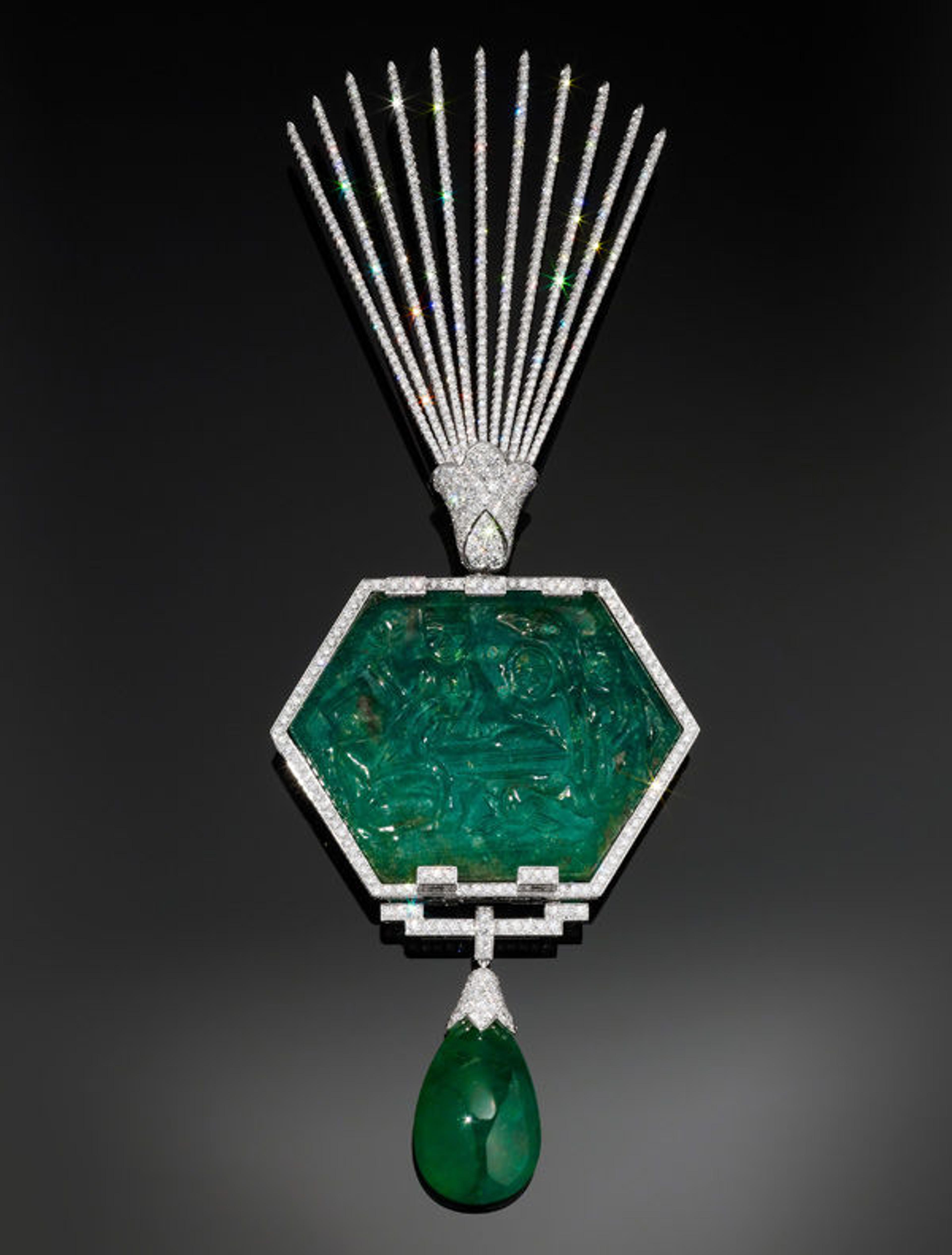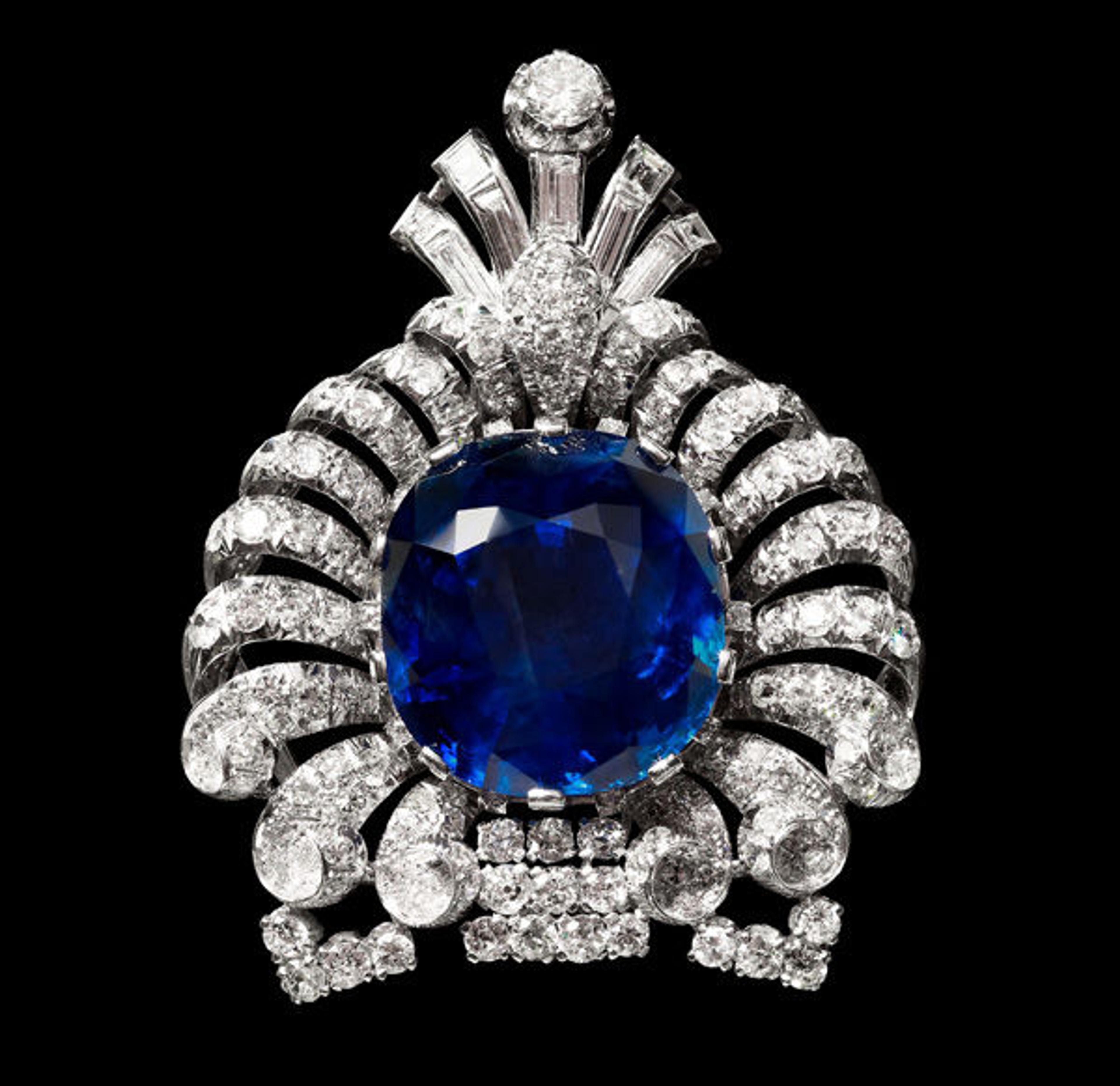In the Stars: Gems and the Indian Tradition

«In North America, we have a rather superficial relationship with gemstones. You may be aware that your birth month is connected with a gem—your "birthstone"—but what's the point of this connection? For most of us, the only gem we associate with any real symbolic value is a diamond, reserved for nuptial engagements as a symbol of commitment; but even this is a very recent affiliation, stemming from a 1947 De Beers ad campaign, "A Diamond is Forever."»
Left: The handle of this ritual spoon depicts a dancing figure of Krishna in rubies, a gemstone associated in the Hindu tradition with the sun and in the United States with being born in July. Ritual spoon (uddharane), ca. 1800. South India. Gold, inlaid with diamonds and rubies; H. 6 5/8 in. (16.7 cm), W. 1 5/8 in. (3.9 cm). The Al-Thani Collection. © Servette Overseas Limited 2013. All rights reserved.
In Hindu cosmology, however, a gemstone is far more than just a pretty object. The fifth-century text Ratnapariksa illustrates how gemstones are imbued with symbolic value relating to deities, planets, and days of the week. Some gems are considered capable of malefic energies (such as ruby, sapphire, coral, hyacinth, and cat's eye) while others (including pearl, emerald, diamond, and topaz) are beneficent.
Taking this into consideration while examining the Al-Thani Collection of jewelry—the focus of the current exhibition Treasures from India: Jewels from the Al-Thani Collection—allows me to reexamine these objects in a completely new light. In addition to being examples of impeccable craftsmanship produced with the finest gems, these jeweled objects were also fabricated to embody much larger cosmic significance.
Emeralds—associated with the planet Mercury, Wednesday, and the mild, eloquent god Budha (not to be confused with Gautama Buddha of Buddhism)—were a favorite gem of Mughal emperors. A large historical emerald in the Al-Thani Collection has been set into an aigrette by Cartier in recent years. The hexagonal shape of the large 380.89-carat emerald and its carved ornament, depicting deities from the Hindu epic the Ramayana, suggests that this gem originally was designed to be worn as an amulet, which likely would have hung around the neck.

Cartier (French, founded Paris, 1847). Emerald aigrette with carved scene of the Ramayana, 2012. France, Paris. Platinum, set with emeralds and diamonds; H. 7 3/4 in. (19.5 cm), W. 3 in. (7.4 cm). The Al-Thani Collection
The carved scene on this emerald depicts the deities Rama and Sita, as well as Hanuman, the celestial monkey god and devoted follower of Rama. Hanuman is venerated across India on account of his humility and loyalty, and devotees believe worshipping him imbues them with physical energy, fearlessness, and mental enlightenment. Amulets featuring large depictions of Hanuman protect the wearer, providing prosperity, peace, and good health.
A jewel that belonged to the Maharaja Shri Kumar Ranjitsinhji of Nawanagar (r. 1907–33), set with a large sapphire is a more puzzling object.

Turban Ornament or Brooch of the Maharaja of Nawanagar, ca. 1920. India. Platinum, set with sapphire and diamonds; H. 3 in. (7.5 cm), W. 2 3/8 in. (6 cm). The Al-Thani Collection
Associated with the planet Saturn, Saturday, and the fearsome deity called Shani, sapphires on their own can be considered quite inauspicious in the Hindu tradition. The owner of this object, however, was a professional cricket player for Sussex County Cricket Club, whose team colors were blue and white. It's possible this association is the reason that Ranjitsinhji made an exception from popular superstition to wear this magnificent 109.5-carat sapphire.
By far the most talismanic jewel that was fabricated and worn in India, however, was known as a navaratna, "nine jewels," which contained one of each stone affiliated with the planetary bodies, which in turn, represented the navagraha "nine celestial deities." Ruby, representing the sun, is always at the center of such jewels. By placing all the possible gems together on a single object, the wearer retains complete cosmic harmony on his or her person.

Nine-gem (Navaratna) talismanic bracelet, 19th century. Northern India. Gold, enamel; inset with turquoise, chrysoberyl, sapphire, topaz, hyacinth, ruby, emerald, diamond, coral, pearl; L. 3 in. (7.6 cm). The Metropolitan Museum of Art, New York, John Stewart Kennedy Fund, 1915 (15.95.21)
Each of the navagraha, or deities (also translated as "nine seizers," in reference to their ability to seize humans and influence destiny), must be continually pacified through rites, offerings, and prayers. If neglected, these celestial deities can cause all kinds of difficulties, epidemics, hysteria, or war. The gemstones, in their dazzling natural forms, polished and set by jewelers, become a physical site into which a deity can descend when occasion demands his presence or protection.
The symbolism infused in these objects demonstrates how this collection can be viewed as an even more powerful representation of Indian culture, which contains a microcosm of Hindu belief, expressed through spectacular natural mineralogy. Perhaps this information may cause viewers to think differently of their own jewelry!
Related Link
MetMedia: Friday Focus—Attributes of Splendor: The Role of Jewels in Projecting Power in Royal India
Courtney Stewart
Courtney A. Stewart is the senior research assistant in the Department of Islamic Art.